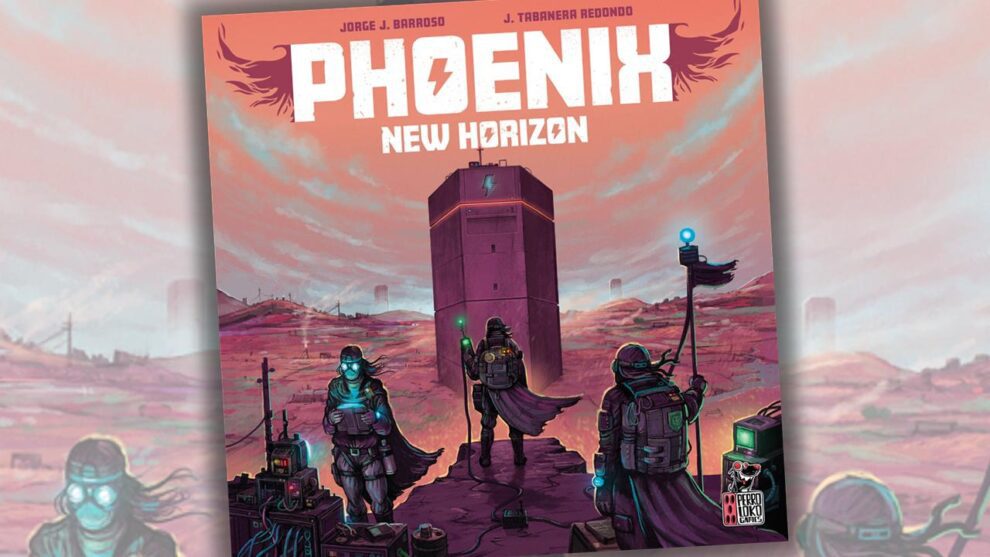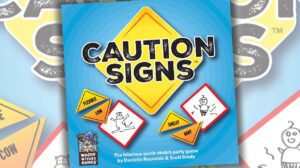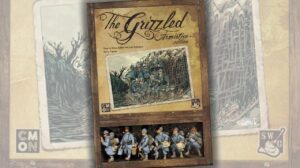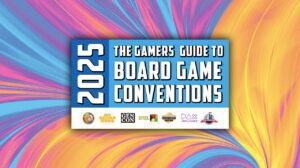Disclosure: Meeple Mountain received a free copy of this product in exchange for an honest, unbiased review. This review is not intended to be an endorsement.
Phoenix New Horizon (2024, published by Perro Loko Games in some regions and Devir in the US) was a hot commodity at SPIEL Essen 2024. So hot that when I dropped by the Perro Loko booth on the Sunday of the show to try and pick up a review copy, the team at the booth took time out of their busy schedule to laugh at me because the game had sold out a couple days prior.
Fast forward to 2025, when I had the chance to get a copy through Devir, the group handling US distribution of the game. I was told the game had innovative mechanics, a fun theme, and a snappy playtime.
As it turned out, only one of those things was true. In a world that is so crowded with similar gaming experiences, it’s really hard to recommend a game in 2025 that fails to stand out.

Pass Me My Eurogame Checklist
Phoenix New Horizon is a worker placement game for 1-4 players. The theme looked interesting on paper: in an alternative universe, it is 2021, and many of the world’s biggest communities were forced underground following a nuclear war. The population is beginning to re-emerge as factions help drive the development of new technology via a single goal: the Phoenix Project, which will push players to help rebuild a community’s infrastructure by constructing regenerators, buildings, and…well, hope, for the people struggling to survive in this new world.
For an experienced Euro player, Phoenix New Horizon checks so many boxes that it appeared to be designed with this very checklist in mind:
- Single-use public milestone tiles
- Tracks that boost the value of various components
- Tracks that offer one-time bonuses
- An income track
- Technologies that offer light asymmetry between players
- A variable setup for the worker placement spots
- A card market with available missions, missions that can be fulfilled once per turn
- A somewhat innovative player order clean-up step, where the player who holds the last-place position can choose where they want to go in turn order in the next round
- Limited in-game scoring, with the majority of points coming during final scoring
- Interaction tied mainly to a race to build on the limited regenerator spaces on the map
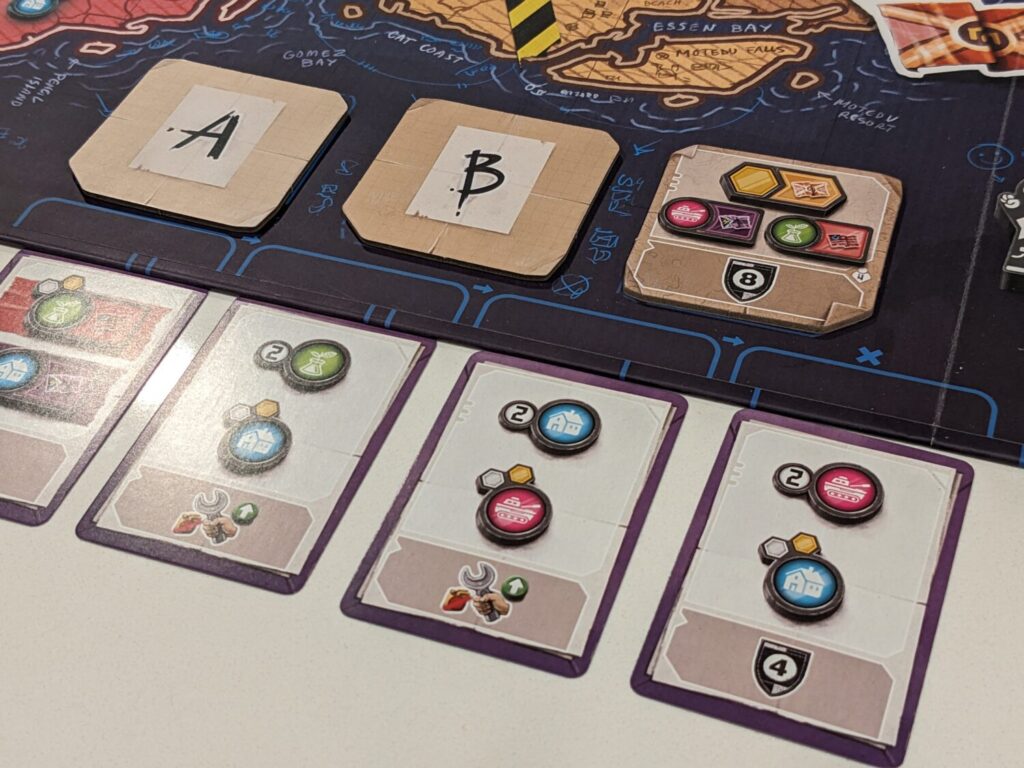
Over the course of four rounds, players will use their three workers—two basic commandos and one commando leader, known mainly for its slight height advantage over the basic grunts—to take actions. The actions are standard fare, but the board layout does present a cool sequencing mechanic: all workers start as level one meeples, with access to only basic actions. Then, through a promotion process that costs the player fuel (the only physical resource in the game), a player can promote their commandos to higher tiers that feature better actions…but only the actions on the commando’s current tier.
This is the main thing that elevates Phoenix New Horizon out of standard Euro fare territory. The tiers lead to real choices—by promoting a commando, the cost can range from 2-6 fuel depending on the level, but there are branching paths for the workers that limit the number of actions each turn. After having a choice of six spaces (four actual actions) on the first tier, players will later find themselves with 3-4 actions, then just two, then only one action on the fourth tier.
That’s a blessing and a curse. The actions get better, but the choices do not, and with only three workers Phoenix New Horizon becomes a fun puzzle as players sort their action choices. Unfortunately, the actions themselves are fairly vanilla…so, on the third tier, you are still constructing buildings or regenerators, but at a discount. Or you are moving up one of the game’s tracks, the Population track, twice instead of once. Early on, the Population track has one-time bonus tokens that feature the same actions available elsewhere, but in a format that allows for a couple of big combo turns each game. Once those action bonus tokens have been retrieved by opponents, the Population track is mainly a place to run meeples up the track for end-game scoring opportunities.
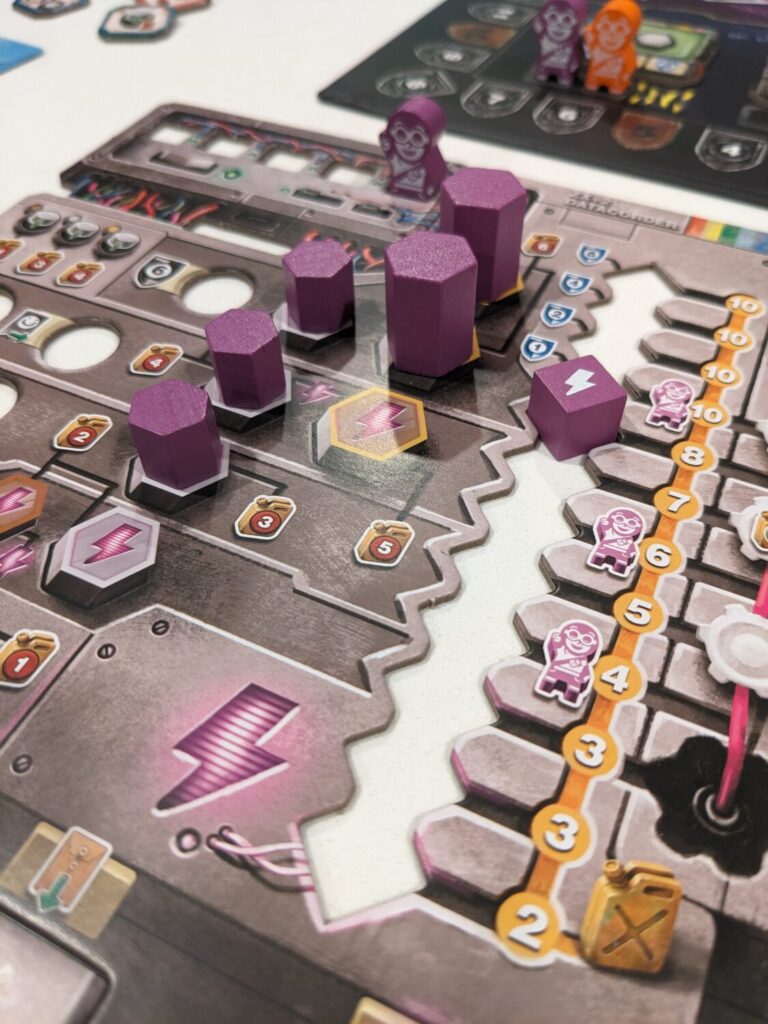
Let’s Wrap This Up
After four rounds and at least 12 turns per player, whoever has the most points wins the game. During each of my plays, I found Phoenix New Horizon to consistently be interesting, maybe even a little puzzly. But it was never thrilling…in fact, far from it. (Phoenix New Horizon doesn’t do itself any favors thanks to a non-localized English rulebook and the complete lack of a player aid, in a game somewhat rich with different icons. Publishers, please work with me: every game needs a player aid!!)
What has been challenging to answer is the reason why Phoenix New Horizon is never thrilling, but I’ll start here: the worker placement puzzle never really challenged players from an action selection perspective. By that, I mean there was never any tension when it came time to make an important choice.
The game’s core scoring mechanic is tied to building regenerators and constructing buildings. Usually, the player who won Phoenix New Horizon built the most structures. So, if you need to build something, you have to have the space to do it…and we never really had an issue finding a free space to take that action. You might have to pay more a little more fuel to do it, or you might have to use more bonuses from completed missions to do it. You might do it in a less-ideal section of the board based on where you wanted to fulfill missions, but either way, it is happening.
One demand I have for games at this stage in my hobby lifecycle is to present a real challenge, and I’m not sure I ever really felt challenged when pursuing my agenda in Phoenix New Horizon. I’m not looking for Agricola levels of worker placement blocking, or Lacerdas like Kanban EV…I just need more tension than the average fare.
In Phoenix New Horizon, there are always places on the board to build. In some cases, I had to build in a space beneath an opponent’s regenerator, which does grant that player a few points, or maybe a mission card, or a bump for that player on the Population track. Fine. But I’m going to do it if that is the only place to build.
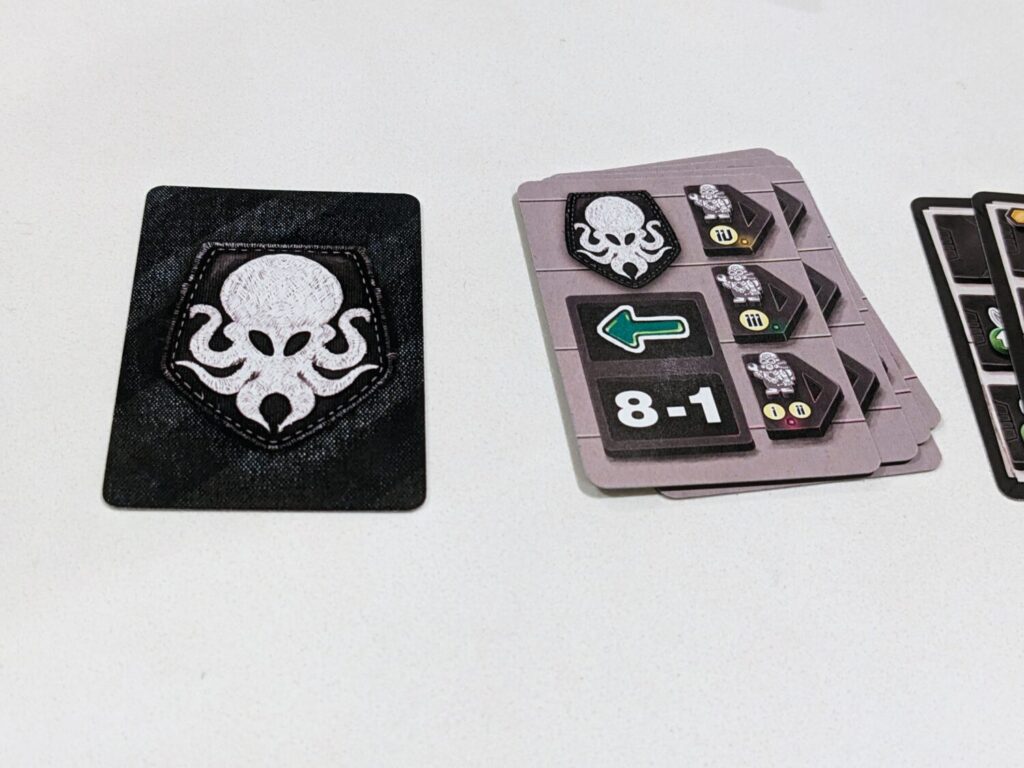
I thought Phoenix New Horizon was just a little too loose. Even early on, when fuel appears to be very tight to start play, I found myself swimming in fuel by the third round of each game, sometimes sooner. There are plenty of ways to get more fuel, and that’s before one has to resort to using what amounts to a passing mechanic by demoting a commando to the first tier to get more gas. In a three-player game, one player won’t be able to build one of their three copper regenerators. That’s tough, but far from crippling, speaking as the player who won that play while not being able to build all my regenerators.
I looked at my game closet while writing parts of this review, as I wanted to see which areas of the Phoenix New Horizon design really shine over anything else I already have. As a worker placement game, there are a number of choices I would take over this one, such as On Mars, Beyond the Sun, Yokohama, and Anachrony. Tracks? Gosh, almost every Euro seems to have them now, and even the tracks in recent games like Ayar: Children of the Sun, Andromeda’s Edge, or any of designer Daniele Tascini’s “T” games are the pick over the tracks found in Phoenix New Horizon.
The milestone mechanic here is pretty weak—there are only three included in each game, and the first two are always pretty easy to do, which may grant the first player in the first round a chance to always reach the A goal first. (In Phoenix New Horizon, only one player can claim each milestone.) And even then, the reward for some of these tiles is like two points and some fuel, nothing that one should really be racing for anyway.
The missions are always going to be important, and in games where they are included, doubling down on a missions strategy while also pursuing the missions technology and the end-game scoring tile for techs could lead to a massive end-game bonus.
Where I’m going here is that almost nothing in Phoenix New Horizon is unique. It’s solid, but it is also a game that is already fading from memory after just a couple plays. I do appreciate that games take about 30 minutes per player, so you can knock out a solo game fast and even with slower players, it answers the bell as a snappy time at the table.
I just wanted Phoenix New Horizon to be more invigorating. Devir has brought us some of the best releases in the medium-weight Euro category over the last few years, so in some ways, Phoenix New Horizon is a minor disappointment. It’s not bad, but seek out more interesting games from Devir’s catalog, such as The White Castle, Bitoku, and Salton Sea. Those feature more innovative mechanics and a much more invigorating time at the table.


